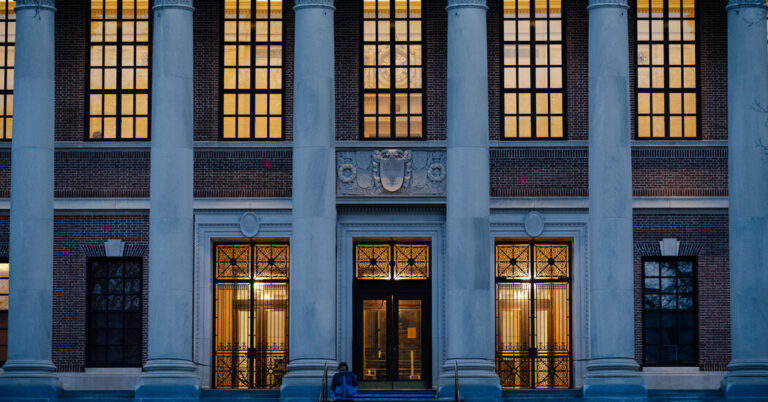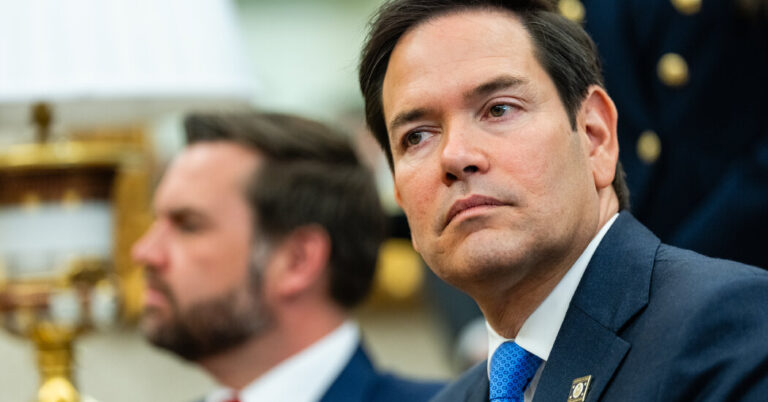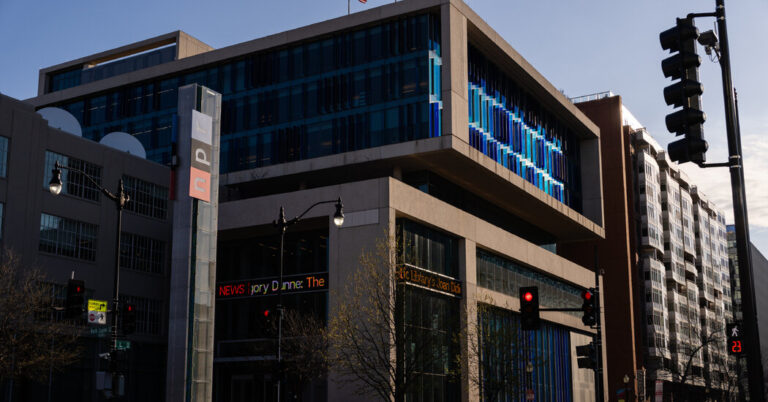Harvard University is 140 years older than the United States, has an endowment greater than the G.D.P. of nearly 100 countries and has educated eight American presidents. So if an institution was going to stand up to the Trump administration’s war on academia, Harvard would be at the top of the list.
Harvard did that forcefully on Monday in a way that injected energy into other universities across the country fearful of the president’s wrath, rejecting the Trump administration’s demands on hiring, admissions and curriculum. Some commentators went so far as to say that Harvard’s decision would empower law firms, the courts, the media and other targets of the White House to push back as well.
“This is of momentous, momentous significance,” said J. Michael Luttig, a prominent former federal appeals court judge revered by many conservatives. “This should be the turning point in the president’s rampage against American institutions.”
Michael S. Roth, who is the president of Wesleyan University and a rare critic of the White House among university administrators, welcomed Harvard’s decision. “What happens when institutions overreach is that they change course when they meet resistance,” he said. “It’s like when a bully is stopped in his tracks.”
Within hours of Harvard’s decision, federal officials said they would freeze $2.2 billion in multiyear grants to the university, along with a $60 million contract.
That is a fraction of the $9 billion in federal funding that Harvard receives, with $7 billion going to the university’s 11 affiliated hospitals in Boston and Cambridge, Mass., including Massachusetts General, Boston Children’s Hospital and the Dana-Farber Cancer Institute. The remaining $2 billion goes to research grants directly for Harvard, including for space exploration, diabetes, cancer, Alzheimer’s disease and tuberculosis.
It was not immediately clear what programs the funding freeze would affect.
Harvard, the nation’s richest as well as oldest university, is the most prominent object of the administration’s campaign to purge “woke” ideology from America’s college campuses. The administration’s demands include sharing its hiring data with the government and bringing in an outside party to ensure that each academic department is “viewpoint diverse.”
Columbia University, which faced a loss of $400 million in federal funding, last month agreed to major concessions the government demanded, including that it install new oversight of its Middle Eastern, South Asian and African Studies Department.
In a letter on Monday, Harvard’s president, Alan M. Garber, refused to stand down. “Neither Harvard nor any other private university can allow itself to be taken over by the federal government,” he wrote.
The administration’s fight with Harvard, which had an endowment of $53.2 billion in 2024, is one that President Trump and Stephen Miller, a powerful White House aide, want to have. In the administration’s effort to break what it sees as liberalism’s hold on higher education, Harvard is big game. A high-profile court battle would give the White House a platform to continue arguing that the left has become synonymous with antisemitism, elitism and suppression of free speech.
Steven Pinker, a prominent Harvard psychologist who is also a president of the Council on Academic Freedom at Harvard, said on Monday that it was “truly Orwellian” and self-contradictory to have the government force viewpoint diversity on the university. He said it would also lead to absurdities.
“Will this government force the economics department to hire Marxists or the psychology department to hire Jungians or, for that matter, for the medical school to hire homeopaths or Native American healers?” he said.
Harvard has not escaped the problems that roiled campuses nationwide after the Hamas-led attacks in Israel on Oct. 7, 2023. In his letter, Dr. Garber said the university had taken steps to address antisemitism, support diverse viewpoints and protect free speech and dissent.
Those same points were made in a letter to the administration from two lawyers representing Harvard, William A. Burck and Robert K. Hur.
Mr. Burck is also an outside ethics adviser to the Trump Organization and represented the law firm Paul, Weiss, Rifkind, Wharton & Garrison LLP in the deal it recently reached with the Trump administration.
Mr. Hur, who worked in the Justice Department in Mr. Trump’s first term, was the special counsel who investigated President Joseph R. Biden Jr.’s handling of classified documents and termed him “an elderly man with a poor memory,” enraging Mr. Biden.
Both lawyers understand the legal workings of the current administration, an expertise of benefit to Harvard.
“Harvard remains open to dialogue about what the university has done, and is planning to do, to improve the experience of every member of its community,” Mr. Burck and Mr. Hur wrote in the letter, addressed to the acting general counsels of the Departments of Education and Health and Human Services and to a commissioner within the General Services Administration. “But Harvard is not prepared to agree to demands that go beyond the lawful authority of this or any administration.”
Representative Elise Stefanik, the New York Republican who held hearings last year investigating antisemitism on college campuses, including at Harvard, was withering in a social media post.
“Harvard University has rightfully earned its place as the epitome of the moral and academic rot in higher education,” Ms. Stefanik, a Harvard graduate, wrote. She added that “it is time to totally cut off U.S. taxpayer funding to this institution that has failed to live up to its founding motto Veritas. Defund Harvard.”
It is unclear what other measure the Trump administration could take against Harvard for its resistance, although potential actions could include an investigation of its nonprofit status and further cancellations of the visas of international students.
The president of the American Council of Education, Ted Mitchell, said that Harvard’s action was essential.
“If Harvard had not taken this stand,” he said, “it would have been nearly impossible for other institutions to do so.”












